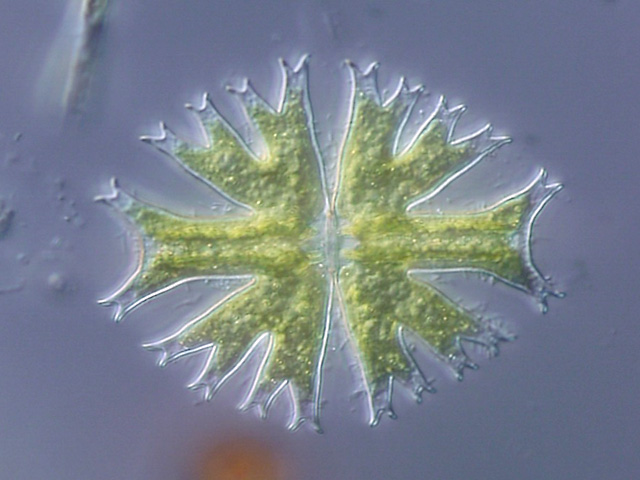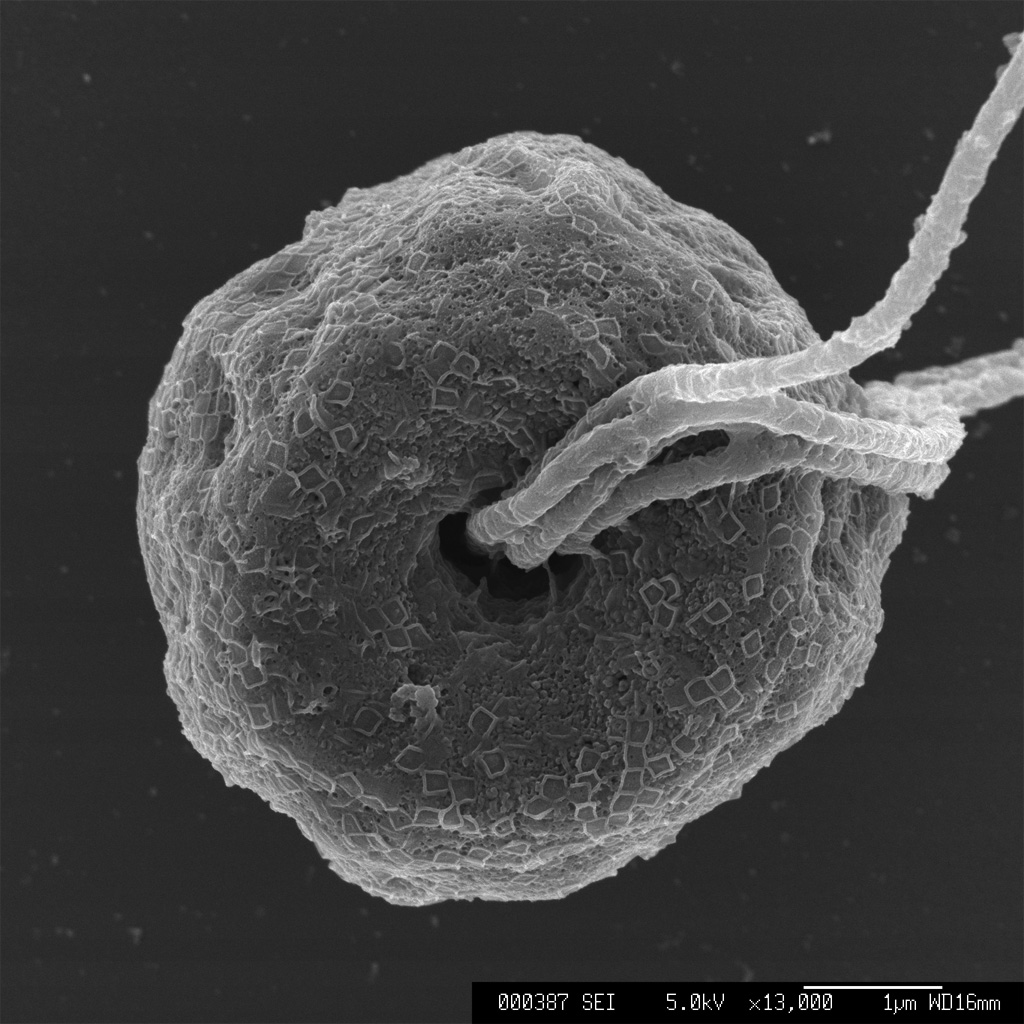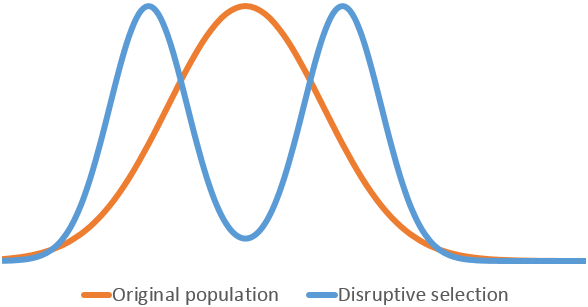|
Rapaza
''Rapaza viridis'' (Latin for 'green grasper') is a species of single-celled flagellate within the Euglenophyceae, a group of algae. It is the only species within the genus ''Rapaza'', family Rapazidae and order Rapazida. It was discovered in a tide pool in British Columbia and described in 2012. ''Rapaza viridis'' is the first known mixotroph (an organism that combines photosynthesis and ingestion of food) and kleptoplastic species within the phylum Euglenozoa. It eats microalgae by engulfing them—a process called phagocytosis—and then uses the chloroplasts from these algae to perform photosynthesis, altering the chloroplasts' structure in the process. In particular, ''Rapaza viridis'' can only feed on '' Tetraselmis'' cells native to their original environment, and will reject any other prey. Due to its unique mode of nutrition and phylogenetic position, ''Rapaza viridis'' is considered an evolutionary step between phagotrophs and phototrophs with permanent chloroplasts. Sc ... [...More Info...] [...Related Items...] OR: [Wikipedia] [Google] [Baidu] |
Euglenophyceae
Euglenophyceae (ICNafp, proposed as a class) or Euglenea (ICZN, proposed as a class) is an unranked clade of single-celled algae belonging to the phylum Euglenozoa. They have chloroplasts originated from an event of secondary endosymbiosis with a green alga. They are distinguished from other algae by the presence of paramylon as a storage product and three membranes surrounding each chloroplast. Description Euglenophyceae are unicellular algae, protists that contain chloroplasts. Their chloroplasts originated from a secondary endosymbiosis with a green alga, particularly from the order Pyramimonadales, and contain chlorophylls ''a'' and ''b''.Some have secondarily lost this ability and evolved toward osmotrophy. In addition to photosynthetic plastids, most species have a photosensitive eyespot. Ecology Euglenophyceae are mainly present in the water column of freshwater habitats. They are abundant in small eutrophic water bodies of temperate climates, where they ar ... [...More Info...] [...Related Items...] OR: [Wikipedia] [Google] [Baidu] |
Kleptoplastic
Kleptoplasty or kleptoplastidy is a process in symbiotic relationships whereby plastids, notably chloroplasts from algae, are sequestered by the host. The word is derived from ''Kleptes'' (κλέπτης) which is Greek for thief. The alga is eaten normally and partially digested, leaving the plastid intact. The plastids are maintained within the host, temporarily continuing photosynthesis and benefiting the host. Etymology The word kleptoplasty is derived from Ancient Greek (), meaning , and (), originally meaning formed or moulded, and used in biology to mean a plastid. Process Kleptoplasty is a process in symbiotic relationships whereby plastids, notably chloroplasts from algae, are sequestered by the host. The alga is eaten normally and partially digested, leaving the plastid intact. The plastids are maintained within the host, temporarily continuing photosynthesis and benefiting the host. The term was coined in 1990 to describe chloroplast symbiosis. Occurrence K ... [...More Info...] [...Related Items...] OR: [Wikipedia] [Google] [Baidu] |
Differential Interference Contrast Microscopy
Differential interference contrast (DIC) microscopy, also known as Nomarski interference contrast (NIC) or Nomarski microscopy, is an optical microscopy technique used to enhance the contrast in unstained, transparent samples. DIC works on the principle of interferometry to gain information about the optical path length of the sample, to see otherwise invisible features. A relatively complex optical system produces an image with the object appearing black to white on a grey background. This image is similar to that obtained by phase contrast microscopy but without the bright diffraction halo. The technique was invented by Francis Hughes Smith. The "Smith DIK" was produced by Ernst Leitz Wetzlar in Germany and was difficult to manufacture. DIC was then developed further by Polish physicist Georges Nomarski in 1952. DIC works by separating a polarized light source into two orthogonally polarized mutually coherent parts which are spatially displaced (sheared) at the sample plane ... [...More Info...] [...Related Items...] OR: [Wikipedia] [Google] [Baidu] |
Microalgae
Microalgae or microphytes are microscopic scale, microscopic algae invisible to the naked eye. They are phytoplankton typically found in freshwater and marine life, marine systems, living in both the water column and sediment. They are unicellular organism, unicellular species which exist individually, or in chains or groups. Depending on the species, their sizes can range from a few micrometers (μm) to a few hundred micrometers. Unlike higher plants, microalgae do not have roots, stems, or leaves. They are specially adapted to an environment dominated by viscous forces. Microalgae, capable of performing photosynthesis, are important for life on earth; they produce approximately half of the atmospheric oxygen and use the greenhouse gas carbon dioxide to grow photoautotrophically. "Marine photosynthesis is dominated by microalgae, which together with cyanobacteria, are collectively called phytoplankton." Microalgae, together with bacteria, form the base of the food web and provid ... [...More Info...] [...Related Items...] OR: [Wikipedia] [Google] [Baidu] |
Binomial Name
In taxonomy, binomial nomenclature ("two-term naming system"), also called binary nomenclature, is a formal system of naming species of living things by giving each a name composed of two parts, both of which use Latin grammatical forms, although they can be based on words from other languages. Such a name is called a binomial name (often shortened to just "binomial"), a binomen, name, or a scientific name; more informally, it is also called a Latin name. In the International Code of Zoological Nomenclature (ICZN), the system is also called nomenclature, with an "n" before the "al" in "binominal", which is a typographic error, meaning "two-name naming system". The first part of the name – the '' generic name'' – identifies the genus to which the species belongs, whereas the second part – the specific name or specific epithet – distinguishes the species within the genus. For example, modern humans belong to the genus ''Homo'' and within this genus to the species ''Hom ... [...More Info...] [...Related Items...] OR: [Wikipedia] [Google] [Baidu] |
Specific Name , the second part (the species epithet) of the name of an animal species
{{Set index article ...
Specific name may refer to: * in Database management systems, a system-assigned name that is unique within a particular database In taxonomy, either of these two meanings, each with its own set of rules: * Specific name (botany), the two-part (binomial) name of a plant species. Hoevever, the species epithet refers to the second part of the name. * Specific name (zoology) In zoological nomenclature, the specific name (also specific epithet, species epithet, or epitheton) is the second part (the second name) within the scientific name of a species (a binomen). The first part of the name of a species is the na ... [...More Info...] [...Related Items...] OR: [Wikipedia] [Google] [Baidu] |
Pyramimonas
''Pyramimonas'' is a genus of green algae in the order Pyramimonadales. Phototropic euglenids inherited their plastids from a close relative of ''Pyramimonas'' which was an endosymbiont inside phagotrophic eukaryovorous euglenids. References Chlorophyta genera Pyramimonadophyceae {{green algae-stub ... [...More Info...] [...Related Items...] OR: [Wikipedia] [Google] [Baidu] |
Plastid
A plastid is a membrane-bound organelle found in the Cell (biology), cells of plants, algae, and some other eukaryotic organisms. Plastids are considered to be intracellular endosymbiotic cyanobacteria. Examples of plastids include chloroplasts (used for photosynthesis); chromoplasts (used for synthesis and storage of pigments); leucoplasts (non-pigmented plastids, some of which can cellular differentiation, differentiate); and apicoplasts (non-photosynthetic plastids of apicomplexa derived from secondary endosymbiosis). A permanent primary endosymbiosis event occurred about 1.5 billion years ago in the Archaeplastida cladeEmbryophyte, land plants, red algae, green algae and glaucophytesprobably with a cyanobiont, a symbiotic cyanobacteria related to the genus ''Gloeomargarita lithophora, Gloeomargarita''. Another primary endosymbiosis event occurred later, between 140 and 90 million years ago, in the photosynthetic plastids ''Paulinella'' amoeboids of the cyanobacteria genera '' ... [...More Info...] [...Related Items...] OR: [Wikipedia] [Google] [Baidu] |
Genetic Divergence
Genetic divergence is the process in which two or more populations of an ancestral species accumulate independent genetic changes ( mutations) through time, often leading to reproductive isolation and continued mutation even after the populations have become reproductively isolated for some period of time, as there is not any genetic exchange anymore. In some cases, subpopulations cover living in ecologically distinct peripheral environments can exhibit genetic divergence from the remainder of a population, especially where the range of a population is very large (see parapatric speciation). The genetic differences among divergent populations can involve silent mutations (that have no effect on the phenotype) or give rise to significant morphological and/or physiological changes. Genetic divergence will always accompany reproductive isolation, either due to novel adaptations via selection and/or due to genetic drift, and is the principal mechanism underlying speciation. On a m ... [...More Info...] [...Related Items...] OR: [Wikipedia] [Google] [Baidu] |
Horizontal Gene Transfer
Horizontal gene transfer (HGT) or lateral gene transfer (LGT) is the movement of genetic material between organisms other than by the ("vertical") transmission of DNA from parent to offspring (reproduction). HGT is an important factor in the evolution of many organisms. HGT is influencing scientific understanding of higher-order evolution while more significantly shifting perspectives on bacterial evolution. Horizontal gene transfer is the primary mechanism for the spread of antibiotic resistance in bacteria, and plays an important role in the evolution of bacteria that can degrade novel compounds such as human-created Bactericide, pesticides and in the evolution, maintenance, and transmission of virulence. It often involves Temperateness (virology), temperate bacteriophages and plasmids. Genes responsible for antibiotic resistance in one species of bacteria can be transferred to another species of bacteria through various mechanisms of HGT such as Transformation (genetics), tr ... [...More Info...] [...Related Items...] OR: [Wikipedia] [Google] [Baidu] |
Common Ancestor
Common descent is a concept in evolutionary biology applicable when one species is the ancestor of two or more species later in time. According to modern evolutionary biology, all living beings could be descendants of a unique ancestor commonly referred to as the last universal common ancestor (LUCA) of all life on Earth. Common descent is an effect of speciation, in which multiple species derive from a single ancestral population. The more recent the ancestral population two species have in common, the more closely they are related. The most recent common ancestor of all currently living organisms is the last universal ancestor, which lived about 3.9 billion years ago. The two earliest pieces of evidence for life on Earth are graphite found to be biogenic in 3.7 billion-year-old metasedimentary rocks discovered in western Greenland and microbial mat fossils found in 3.48 billion-year-old sandstone discovered in Western Australia. All currently living organisms on Earth sha ... [...More Info...] [...Related Items...] OR: [Wikipedia] [Google] [Baidu] |
Phototroph
Phototrophs () are organisms that carry out photon capture to produce complex organic compounds (e.g. carbohydrates) and acquire energy. They use the energy from light to carry out various cellular metabolic processes. It is a list of common misconceptions, common misconception that phototrophs are obligatorily photosynthetic. Many, but not all, phototrophs often photosynthesize: they anabolism, anabolically convert carbon dioxide into organic material to be utilized structurally, functionally, or as a source for later catabolism, catabolic processes (e.g. in the form of starches, sugars and fats). All phototrophs either use electron transport chains or direct proton pumping to establish an electrochemical gradient which is utilized by ATP synthase, to provide the molecular energy currency for the cell. Phototrophs can be either autotrophs or heterotrophs. If their electron and hydrogen donors are inorganic compounds (e.g., , as in some purple sulfur bacteria, or , as in some gr ... [...More Info...] [...Related Items...] OR: [Wikipedia] [Google] [Baidu] |








